Contents
The use of folk remedies instead of chemical fertilizers is practiced by a fairly large number of summer residents. Such top dressing is suitable for any horticultural crop, and cabbage is no exception. Moreover, this is a remedy for her from the “two in one” category: gardeners in different forms use wood ash from pests of cabbage and to provide it with phosphorus and potassium, without which the normal formation of heads is impossible.
Is it possible to fertilize cabbage with ash
Wood ash is one of the most suitable folk remedies for feeding cabbage. Firstly, it contains more phosphorus and potassium than nitrogen, and secondly, it has the ability to neutralize excessive acidity of the substrate. Cabbage reacts negatively both to an excess of this macroelement in the soil, and to excessively acidic soil.
Also, top dressing at the same time helps to reduce the risk of developing dangerous diseases such as keel and black leg. Most varieties and hybrids are very susceptible to them, the gardener may lose the crop even at the stage of growing seedlings. In addition, wood ash fertilizer for cabbage is also a protection against slugs and some other pests.
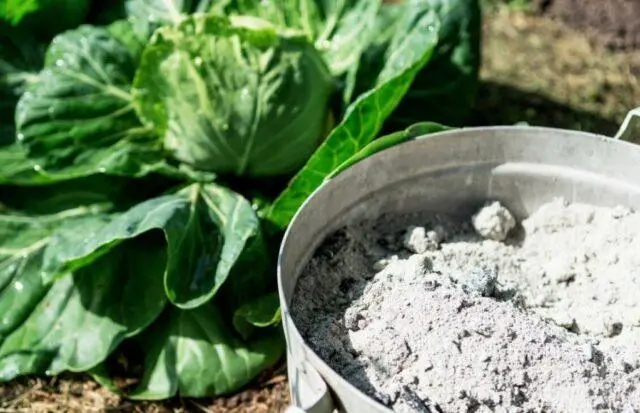
The fact that top dressing with wood ash has a positive effect on the volume and quality of the cabbage crop has been tested and proven.
What is useful ash for cabbage
When deciding whether to feed cabbage with wood ash, you need to consider the following points:
- It has a rich chemical composition: it contains potassium, phosphorus, calcium, magnesium, iron, sulfur, molybdenum in different proportions. Cabbage “loves” all these macro- and microelements, it needs them for normal development and head formation.
- Provided with the necessary substances in sufficient volume, plants demonstrate better endurance and the ability to resist negative external influences. As a result, the gardener can count on a greater yield, its increased keeping quality and transportability.
- Improves the quality of the substrate. This is especially noticeable if the soil is “heavy”: it becomes looser, the roots receive enough oxygen, and water does not stagnate in the soil. The culture always reacts very negatively to the latter.
- Neutral or close to this pH of the substrate is restored. It is impossible to grow cabbage in acidic soil. Firstly, plants practically do not develop, and secondly, they are almost inevitably affected by clubroot.
- Top dressing simultaneously protects plants from diseases and pest attacks.
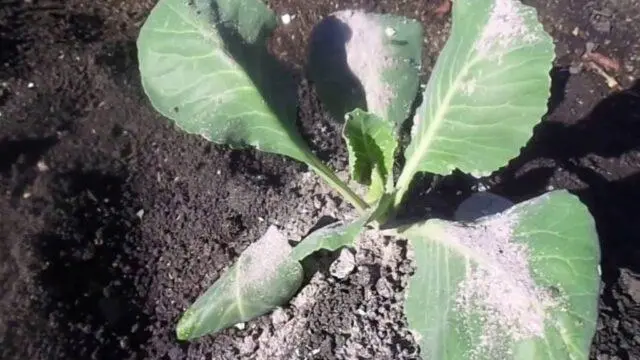
Most often, wood ash is used for top dressing, but ash from burning peat, coal, straw is also suitable.
Advantages and disadvantages of ash
Gardeners choose ash top dressing, given its many advantages:
- the naturalness of the product, its complete safety for human health, pets, the environment;
- availability and low cost;
- ease of use and preparation of feed products;
- the possibility of application at any stage of plant development, including immediately before harvesting;
- the presence in the composition of the main macro- and microelements necessary for the plant;
- “multifunctionality”.
There are also quite significant disadvantages:
- if we take into account the concentration of nutrients, wood ash obviously “loses” store fertilizers;
- if the storage conditions are not observed, the potassium content drops sharply;
- it is not always possible to “trace” the completely organic origin of “raw materials”;
- it is unsuitable for application on alkaline soils.
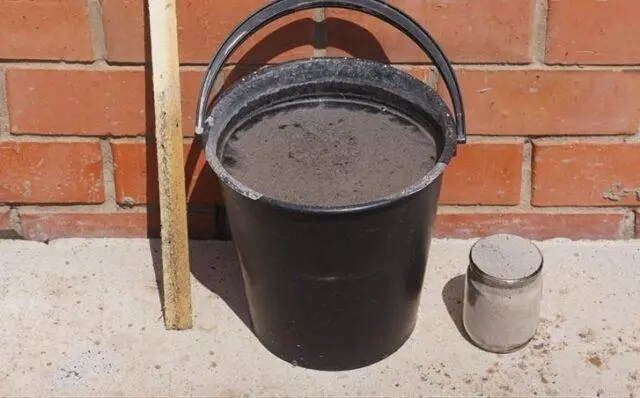
The use of ash in the cultivation of cabbage allows you to solve several problems at once
How to process cabbage with ash in the open field
Ash can be used in “pure form”. But decoctions, solutions, infusions are also prepared from it – in this form, plants absorb nutrients faster and better.
dry ash
The easiest way is to feed the cabbage with dry ash. Preparation for the procedure is limited to sifting it to remove large “fractions”. It turns out something between powder and dust. In this form, it is used for:
- “Dusting” of leaves and stems. The purpose of this treatment is to protect plants from the cruciferous flea, cabbage fly, aphids, and other insects. You can simply sprinkle cabbage with ash from pests, but for the best effect, so that it “sticks” to the surface, they are pre-sprayed with water from a fine spray bottle.
- Introducing into the surface layer of the soil. Most often, this procedure is carried out before planting cabbage: the ashes are scattered over the surface of the beds and embedded in the soil in the process of loosening. This allows you to protect seedlings from slugs, reduces the population of cabbage fly larvae.
- Introducing into deep layers of soil. It is carried out in the process of autumn digging the beds. Another option is to pour ashes into each seedling hole. So you can significantly reduce the risk of an attack on cabbage by a bear, wireworm, larvae of any butterflies.
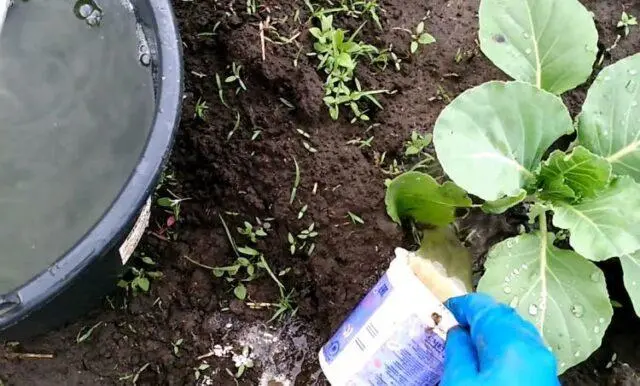
Despite the seeming “harmlessness”, it is not worth abusing the feeding of cabbage with dry ash
Ash solution
With a freshly prepared solution, cabbage is watered under the root. For 10 liters of water, about 300 sifted “raw materials” will be required. Preparing the fertilizer is extremely simple: the ash is poured with water, stirred intensively for several minutes.
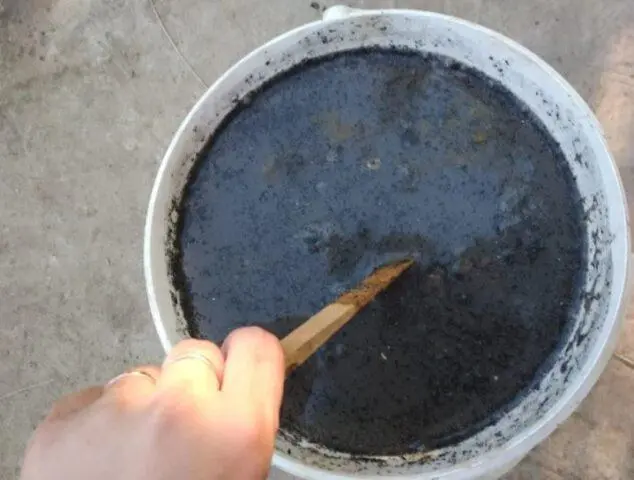
In the process of processing the beds, active stirring or shaking of the liquid will often have to be repeated.
Ash infusion
It takes up to two days to prepare the infusion, although sometimes gardeners leave it for 3-4 days. For 10 liters of water, take 350-400 g of sifted wood ash. It is poured with boiling water, mixed, tightly covered with a container and cleaned for 1-2 days in a warm place.
Filter the liquid before use. If the infusion is planned to be used to treat the aerial parts of plants, add a little (10-15 g / l) small shavings of laundry or green potassium soap to it. This will increase the resistance and effectiveness of protection against diseases and pests: the infusion will “stick” better to the cabbage leaves, the soap itself destroys many pathogens.
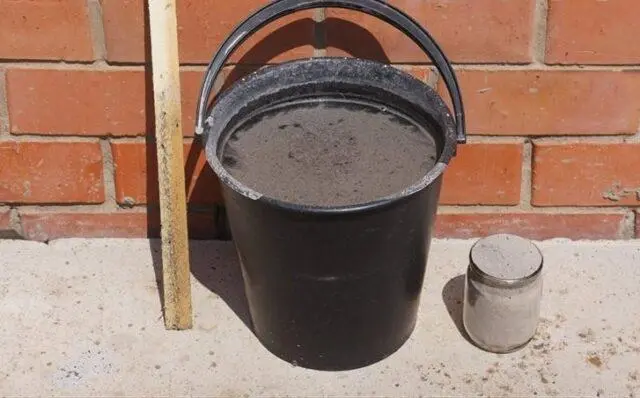
Infusion of ash in terms of “concentration” is a cross between its solution and decoction
decoction
A decoction, like an infusion, is suitable for both root and foliar dressings. In the second case, soap shavings can also be added to it.
A decoction is the most concentrated remedy. About 300 g of wood ash is poured with boiling water (1,5 l), kept on a minimum heat for 30-45 minutes, stirring occasionally. The finished product should be allowed to cool, strain through cheesecloth and pour the resulting liquid into water, bringing the total volume to 10 liters.
Terms and schemes of application
Wood ash seems to be a folk remedy, unable to harm the cabbage. However, there will not be much benefit from its “chaotic” introduction and excess dosages. The maximum effect is provided if the cabbage is fed with wood ash in the open field at certain stages of development and in combination with other means.
It is impossible to specify the specific dates for the introduction of wood ash as a top dressing for cabbage. It all depends on the characteristics of the local climate and the general characteristics of the species, as well as the specific variety or hybrid.

Top dressing with wood ash will be useful for any type of cabbage, but the timing of application will have to be determined individually.
Gardeners use the following diagram as an approximate standard guideline. Fertilizing cabbage with wood ash is carried out:
- Immediately after planting cabbage in open ground. Watering fertilizer with wood ash (0,2-0,3 l per plant) or its introduction into the hole helps seedlings to endure “stress” without damage, activates the process of forming the root system. To enhance the effect, you can use it in combination with any biostimulant. Simultaneous dusting of leaves protects seedlings from pest attacks. The peak of activity, for example, of the cabbage fly falls just in May-June, when the cabbage is transplanted into open ground. Tender leaves of seedlings suffer from it especially strongly, the most seriously damaged plants die.
- 10-14 days after transplanting to the garden. The norm increases to about 0,5 liters. Seedlings by this time should adapt to a new habitat. This is evidenced by the leaves appearing on the cabbage. At this stage of development, for the active growth of green mass, it needs nitrogen, which wood ash cannot provide for cabbage. Accordingly, it is combined with any mineral nitrogen-containing fertilizers (urea, ammonium sulfate) or with suitable folk remedies. Nitrogen is rich in infusion of cow dung, bird droppings, “green tea” from nettle leaves, dandelions.
- After another 1,5-2 weeks and then with an interval of 25-30 days. They consume 1,5-2 liters per outlet. Top dressing is stopped about two weeks before harvest. Accordingly, their number varies from 1-2 for early and mid-early varieties and hybrids to 3-5 for late-ripening and mid-late ones. Here, plants no longer need nitrogen, they need phosphorus and potassium to form heads. However, it should be taken into account that as the sockets grow, their needs increase, wood ash is not able to “cover” them completely. Therefore, it is used in conjunction with complex store-bought fertilizers designed specifically for cabbage.
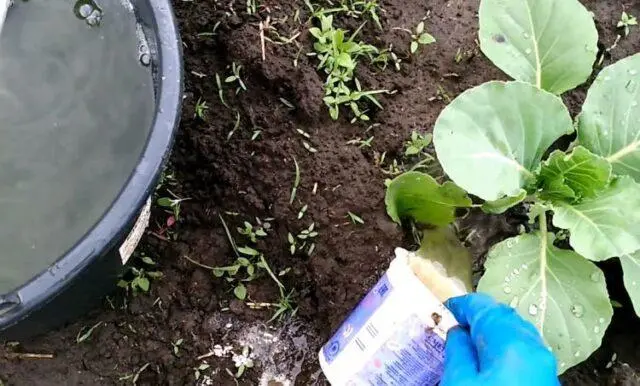
As the rosette of leaves grows, so does the rate of fertilizer application based on wood ash.
Conclusion
Wood ash from pests of cabbage is a long and well-known remedy that has successfully proven its effectiveness. As a fertilizer, it is less effective, since in terms of the content of macro- and microelements it is significantly inferior to specialized store preparations.









